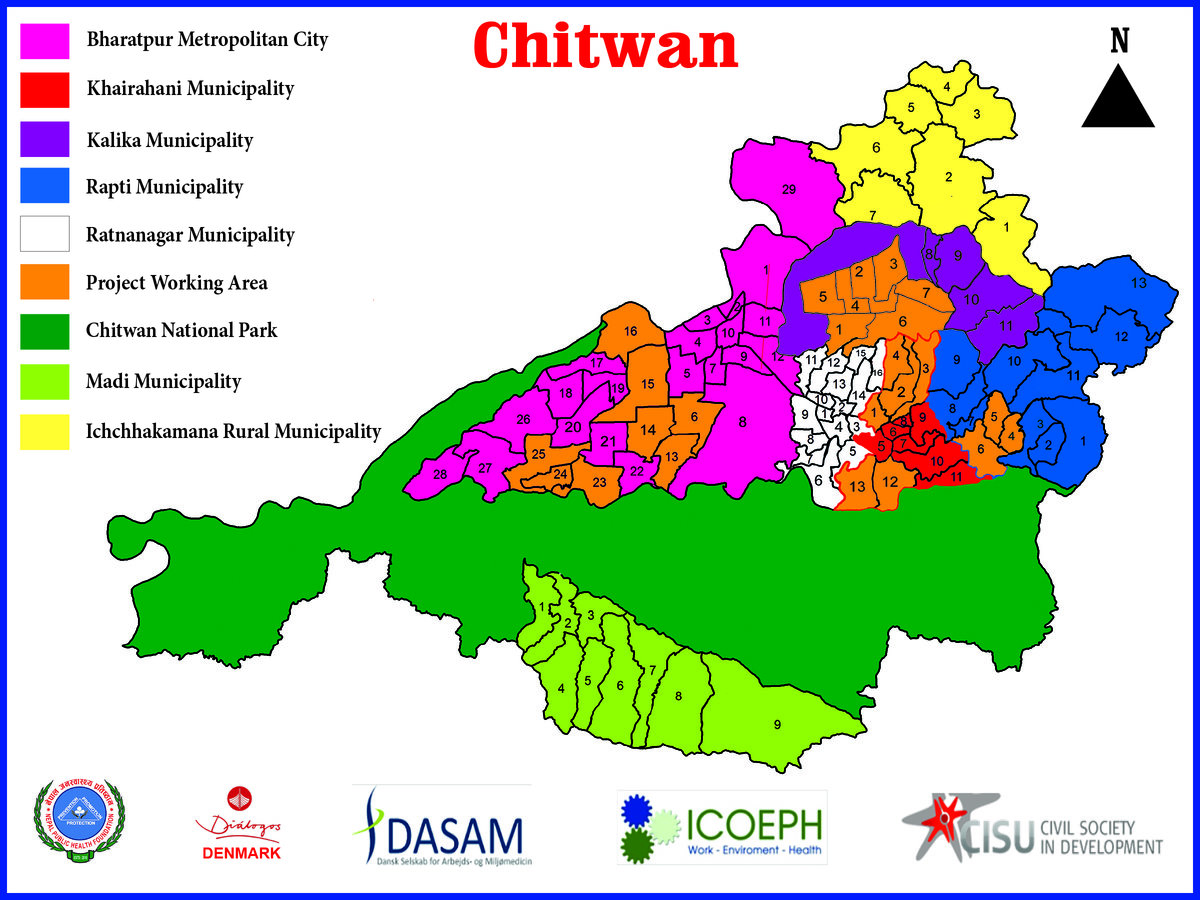Farming, Health and Environment Nepal Project (FHEN) Phase II (Sept 2017-Mar 2020)
September 2017-March 2020

-
After the successful completion of the first phase of Farming, Health and Environment Nepal Project (FHEN), Phase-II has been launched since September, 2017 in Chitwan district. FHEN is one of the projects of Nepal Public Health Foundation aimed to improve the health of farmers and consumers by promoting a healthy and sustainable food production in Nepal with a focus on Integrated Pest Management (IPM). This project has been developed to address the growing problems of irrational use of pesticides in farming. Core target groups are local farmers, pesticide retailers, pesticide sprayers, school teachers, health workers and community people (consumers). One of the major activities of the project is to train local farmers on IPM with practical exercises based on Farmers’ Field School concept, onsite coaching and equipment support. Health workers and Female Community Health volunteers are also trained for their capacity enhancement to prevent and manage pesticide poisoning in the community. Awareness of pesticides to the community is spread through schools as well. Besides, we also advocate in this issue at the district and national levels through workshops and by writing scientific articles and disseminating information through local and national media.
-
Objective 1: To prevent occupational pesticide poisonings among farmers, professional sprayermen and pesticide retailers by strengthening their knowledge, attitude and practice on IPM and organic alternatives to pesticides.
Objective 2: To prevent pesticide poisonings including those due to self-harm and accidents by increasing awareness in the villages among the health care workers about treatment and prevention.
Objective 3: To facilitate advocacy to reduce pesticide poisonings and pollution by dissemination of knowledge, strategies and materials developed in the project at district and national levels.
-
Objective 1: To prevent occupational pesticide poisonings among farmers, men and women, sprayers and pesticide retailers by strengthening their knowledge, attitude and practice on IPM and organic alternatives to pesticides.
1.Training and follow up to farmers groups
2.Training and follow up to pesticide retailers
3.Training and follow up to professional spray men
Objective 2: To prevent pesticide poisonings including those due to self-harm and accidents by increasing awareness in the villages among the health care workers about treatment and prevention.
1.Training and follow up to first line health care workers
2.Training and follow up to FCHVs
3.Training and follow up to school teachers
Objective 3: To facilitate advocacy to reduce pesticide poisonings and pollution by dissemination of knowledge, strategies and materials developed in the project at district and national levels.
- 1. Orientation for DAC and CSC members
2. Media advocacy through popular and scientific articles and conference
3. Researches
Following posters were prepared for the awareness program:
1. Pesticide-Is it a medicine or poison
2. Reminder checklist for pesticide retailers
-
Working areas:
It covers erstwhile 10 Village Development Committees namely: Bhandara, Chainpur, Jagatpur, Mangalpur, Sukranagar, Gitanagar, Jutpani, Kumroj, Padampur, and Shivanagar.
Overall, the direct beneficiaries are as follows:
1. 160 members of the primary target groups (youth, farmers, and women) in old and new VDCs selected by Farmers’ Cooperatives and Mothers’ Groups. Expected sex ratio60% males and 40 % females.
2. 15 pesticide dealers selected in local agro chemical shops in coordination with the District Agricultural Development Office. Expected sex ratio 60% males and 40% females.
3. 20 professional pesticide sprayers selected in coordination with Farmers’ Cooperatives. They do not belong to any organization but work informally on a daily wage basis paid by the commercial farmers. Expected sex ratio 90% males and 10% females.
4. 45 health care workers from the health clinics in the old and new VDCs. Expected sex ratio 40% males female and 60% females.
5. 90 Female Community Health Volunteers in old and new VDCs. These women are nominated by the village unit and work voluntarily doing home visits to support families with health and nutrition issues, especially for infants. Expected sex ratio 100 % female.
6. 40 teachers from public schools, 2 teachers from 2 different schools in each VDC, will be offered a guide and teaching materials. Expected sex ratio 50% males and 50% females.
7. 1500 grade 6 to 10 schoolchildren will be reached by an effort to include ‘pesticide, health and environment’ as a theme in teaching environmental issues in the schools. Expected sex ratio 50% males and 50% females.
Secondary and indirect target groups are the population in Chitwan reaching an approximated 500.000 persons in the district. Advocacy will be directed towards particular groups who hold decision making power or are in a position to otherwise influence others, e.g. local leaders of Farmers’ Cooperatives.
